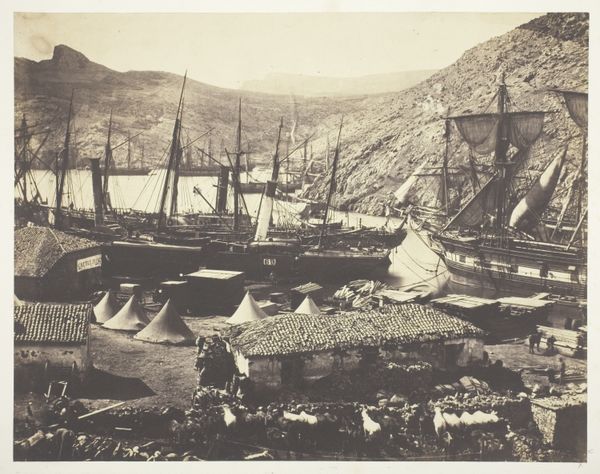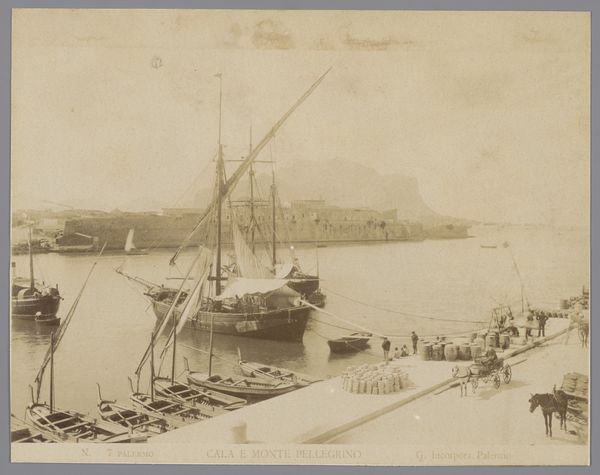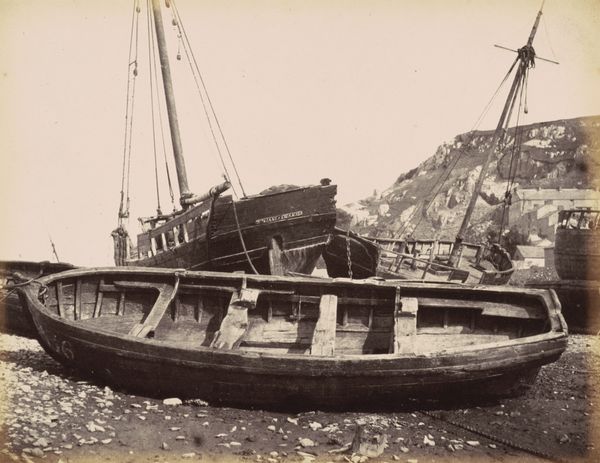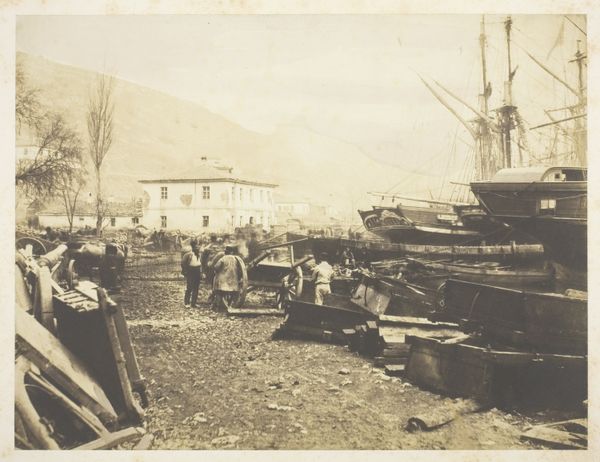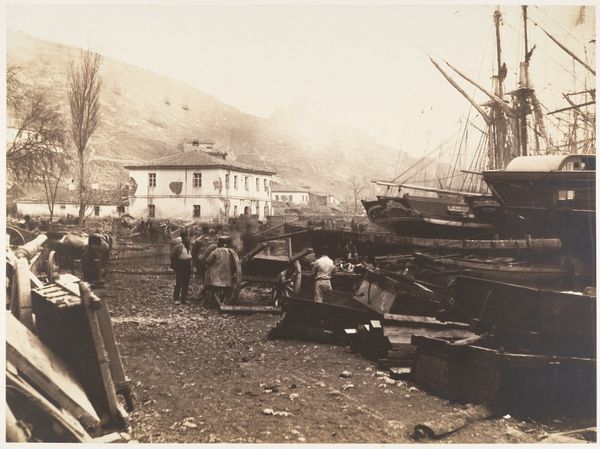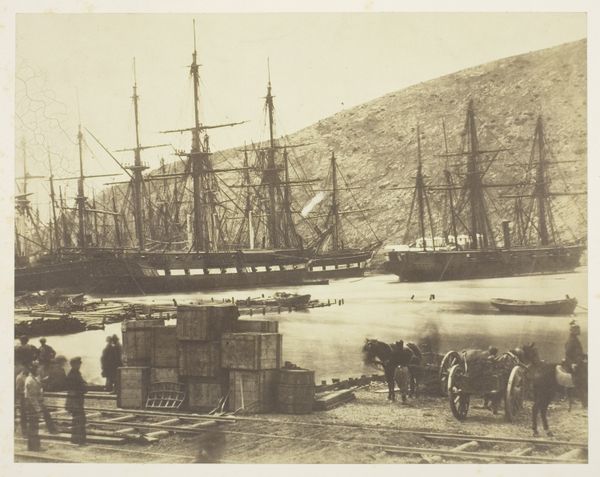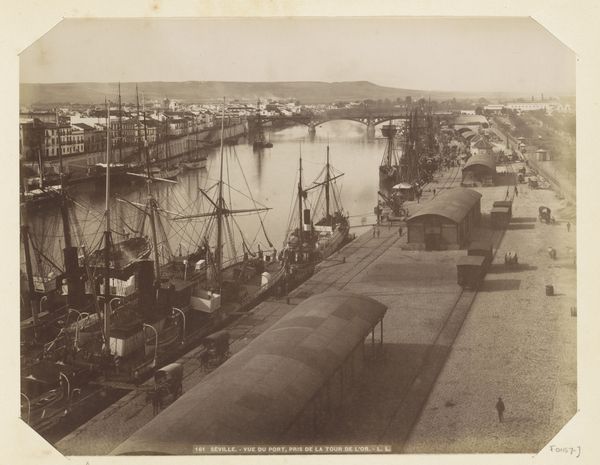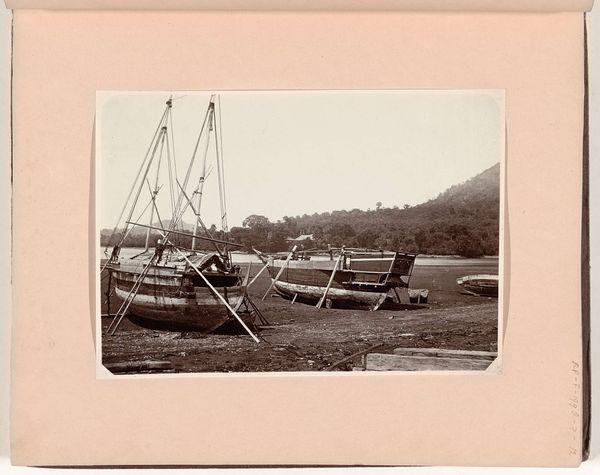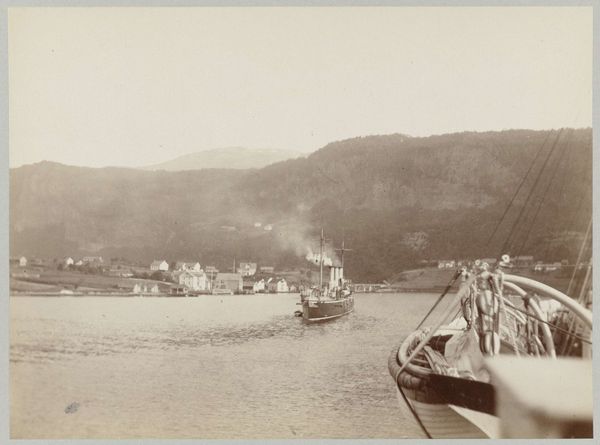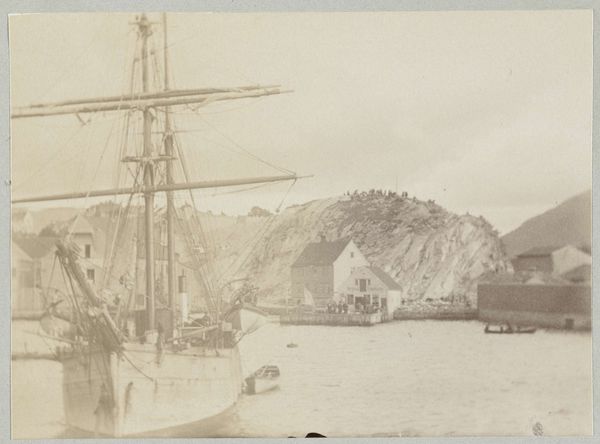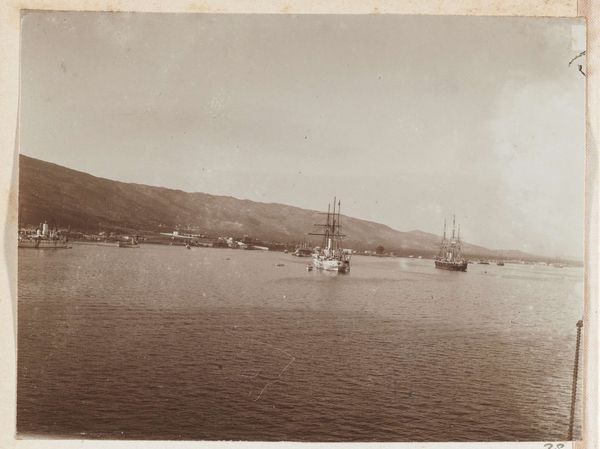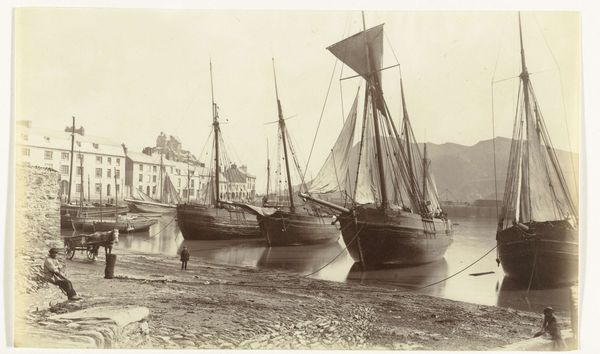
print, photography, gelatin-silver-print
# print
#
landscape
#
photography
#
historical photography
#
gelatin-silver-print
#
19th century
Dimensions: image/sheet: 23.8 × 33.2 cm (9 3/8 × 13 1/16 in.) mount: 18.5 × 63.7 cm (7 5/16 × 25 1/16 in.)
Copyright: National Gallery of Art: CC0 1.0
Curator: Giacomo Caneva created this gelatin-silver print, "Salerne," in 1855. Editor: There’s a distinct stillness. The image is sepia-toned, two ships are beached on the sand and somehow it evokes a sense of melancholy, doesn’t it? The textures are so interesting, all that coarse fabric and those heavy barrels holding up the bow. Curator: Yes, but consider this photograph within the context of 19th-century travel and imperialism. These ships weren’t simply aesthetic objects; they represent connection and often, exploitation. The materials speak volumes—where were these raw goods sourced, and who was involved in their production and trade? What labor supported this image? Editor: That’s a good point. I am drawn to the means by which the ships themselves were created, constructed, and put to work. Were enslaved workers exploited in the shipbuilding or maritime industries at the time? We cannot separate artistic expression from socio-economic factors. But even on a purely material level, that separation between craft and fine art is blurry. This image draws me in due to Caneva’s choice of gelatin silver: think of its tactile properties, which transform the way viewers see and touch what is depicted. Curator: It is important to recognize the uneven power dynamics inherent in early photography. Who was being photographed, by whom, and for what purpose? Salerne, as a location, might speak to broader narratives of cultural exchange or domination depending on how the area has been impacted throughout time, and perhaps there’s also an opportunity to think more broadly about class dynamics through exploring representations in visual culture during that historical time. Also, while beautiful, it might also capture a fleeting moment from somewhere or something being lost. Editor: Yes, absolutely. Thinking about how our consumption fuels inequalities makes it even harder now because of technology, and our increasing appetite. Curator: Thinking through the lens of the present reshapes our perception of the past. The act of historical excavation urges us to acknowledge and understand this work as a cultural artifact embedded within a web of complex power relations. Editor: The ships as material object: transformed by human labor in particular, that makes a vital throughline into the present. I look at this and I feel motivated to get into my studio to build with new processes, perhaps thinking with Caneva but then pushing further beyond him in my approach.
Comments
No comments
Be the first to comment and join the conversation on the ultimate creative platform.
